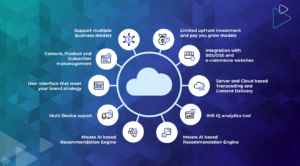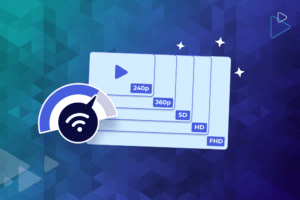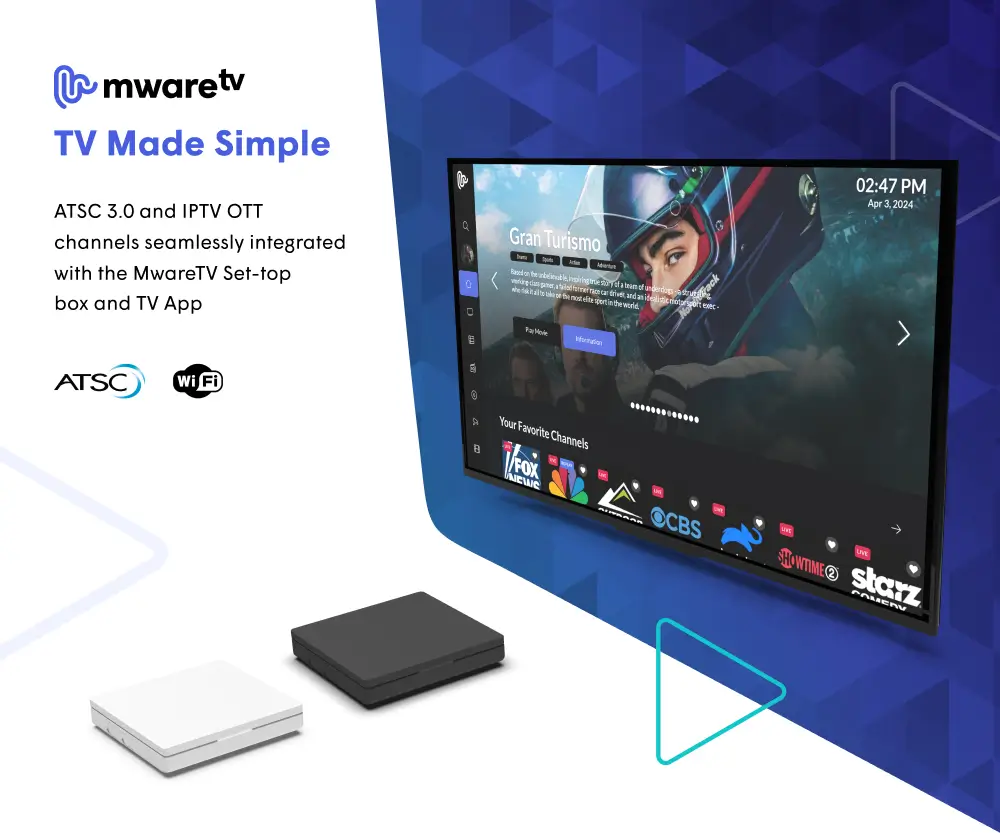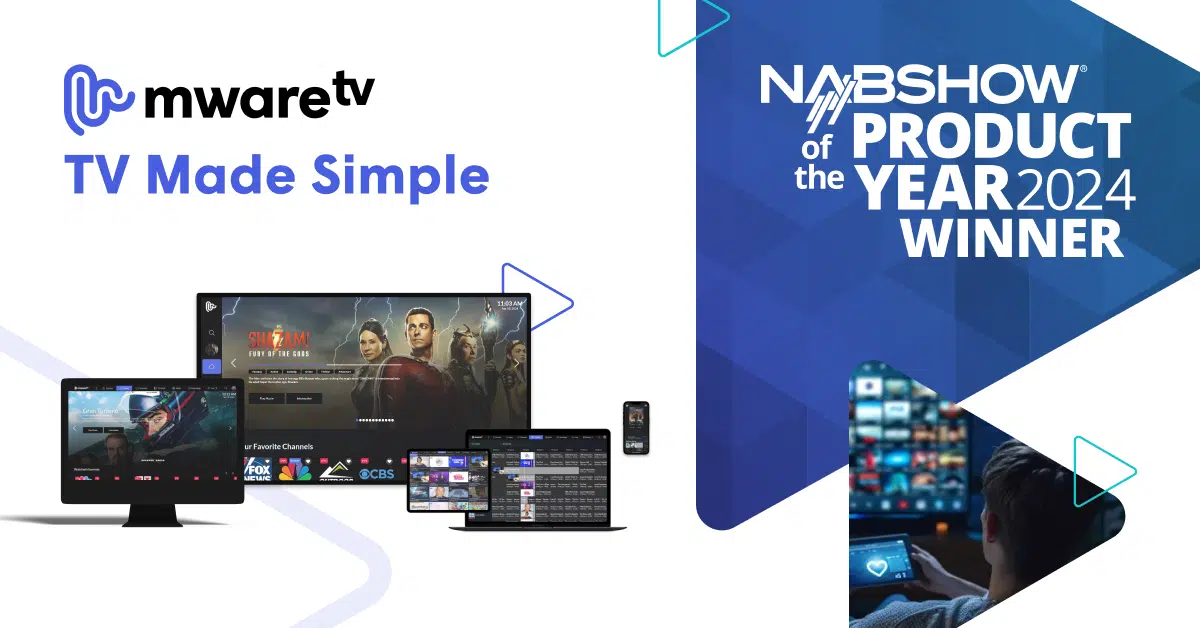
A management guide towards a successful IPTV OTT Service: Transcoding and Broadcasting
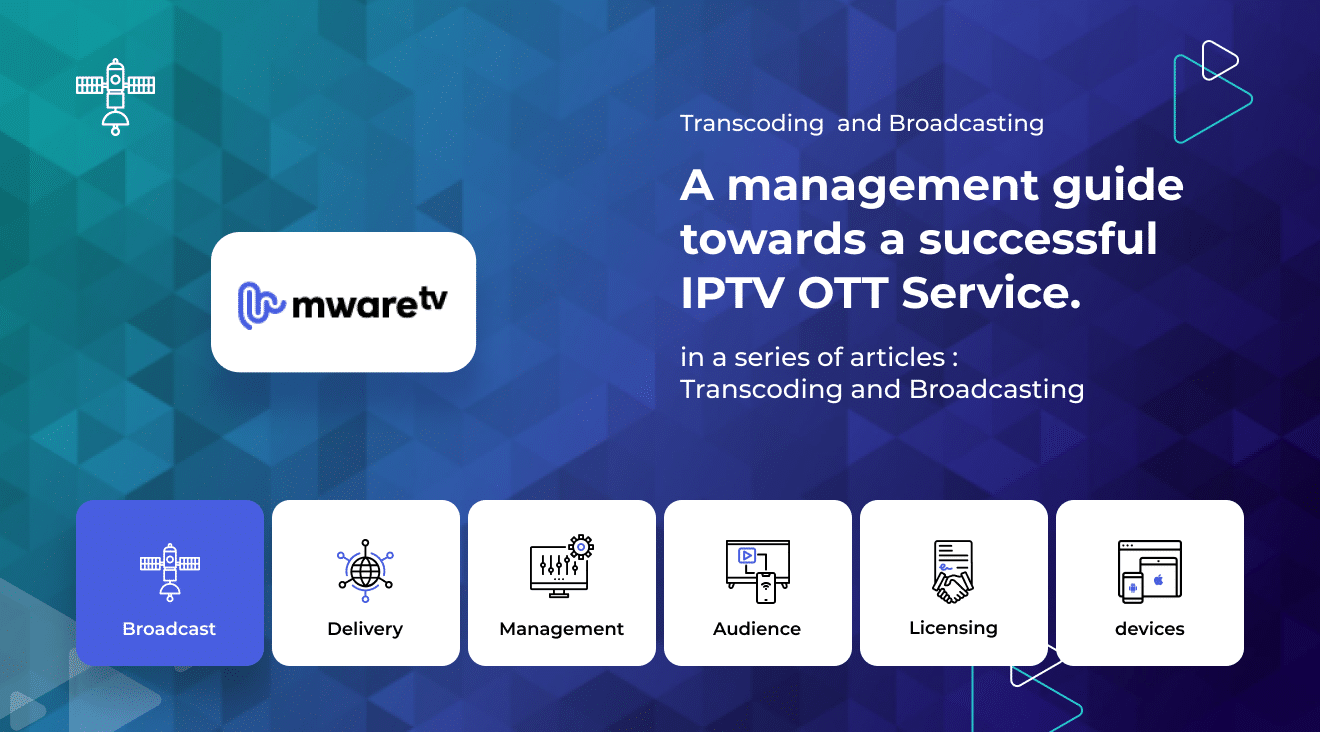
At MwareTV, we understand this pain and confusion very well, because we deal with SMBs and companies planning to start a TV Service daily and help them navigate this maze of choices that the video industry offers.
Video is one of the most expressive mediums of communication in today’s world that connects people from different countries and cultures in a way that no other medium of communication can match!
In a world gripped by the COVID-19 pandemic, one of the shining lights has been video-based communication which has
- Enabled entire organizations to work from home efficiently.
- Allowed a whole generation of children to learn from home via online education.
- And, has entertained the entire world with news, sports, dance, theater, etc., while staying indoors in a bid to stay safe.
As the world laps up video like never before, there is a clear signal to entrepreneurs that video-centric businesses have a bright future ahead – if executed well.
But do they have the necessary skill-set or know-how to dive in and run a successful business?
In a world where consumers compare video streaming services with Netflix, Amazon Prime, or Hulu – each of which has billion-dollar budgets, it can be scary or discouraging to entrepreneurs and companies who just want to get started up.
At MwareTV, we understand this pain and confusion very well, because we deal with SMBs and companies planning to start a TV Service daily and help them navigate this maze of choices that the video industry offers.
Series of articles
To help others in the same predicament, we’ve decided to launch a series of articles that talk you through the launch of a video streaming platform – starting from transcoding, delivery, playback, monetization, user experience and many more. Each piece will show you the various options available, potential pitfalls, and how MwareTV can step in and guide you every step of the way.
To lay down a common thread for our article series, we assume that a fictitious company FakebrandTV wants to start a new streaming service in 2021.
We assume that FakebrandTV has assembled a team to handle this project and that they have outlined the following goals for the new streaming service – FakebrandTV+.
- Content: Live News and VOD comprising documentaries and entertainment (kids and drama).
- Subscription-based monetization
- Delivery via ABR streaming protocols such as HLS and DASH (multi-bitrate delivery), protected using DRM and Watermarking.
- It needs to support Smart TV (Samsung, LG), Android, iOS, tvOS, Roku, Chromecast.
- Starting with 5,000 subs the first month with a projected growth of 10% each month after that.
With these business goals, let’s walk through the process of setting up a video streaming service, starting with Transcoding and Video Compression.
Transcoding and Broadcasting
In the first part of this series, we assume that the content has been licensed to FakebrandTV in an HD, high bitrate format. Now, in order to deliver and store the content library, Acme needs to compress the video to a more efficient format and size. For this, they need to set up a full-fledged encoding infrastructure.
In the next few sections, we will take a look at Transcoding and Video Compression – what it takes to build and operate a highly-scalable, efficient, and reliable transcoding system for your video streaming service.
Let’s start by defining the act of Transcoding.
Transcoding is the process of converting an input video into a set of videos of different bitrates and resolutions, aimed at multi-bitrate delivery. During transcoding, the input video is compressed to reduce its file-size for storage and transmission without adversely affecting its quality.
One can choose from cloud-transcoding providers, or buy Commercial Off-The-Shelf hardware and build their own transcoders with open-source software, or buy dedicated transcoding hardware. MwareTV is able to advise you on the best solution for your project.
Whichever route you decide to go down, there are a lot of options, decisions, and considerations to make before you make a decision.
In this article, we take a look at some of those decisions and what factors influence them.
To start off, a couple of very important factors that determine the scale, quality, and efficiency of transcoding are –
- Type of transcoding: Live or VOD
- Choice of Codec
- Quality of your Input
- Bitrate Ladder or Profiles Chosen for Transcoding.
Let’s understand how these factors have a huge impact, starting with the Type of Transcoding.
Live and VOD Transcoding
Live and VOD (Video On Demand) are terms used to describe how video is consumed, and they have a tremendous impact on the entire delivery infrastructure, starting with the transcoders.
This is due to the nature of the video delivery and consumption of the two modes – Live and VOD.
Live Video Streaming is continuous and needs to deliver the video from the input to the screens in as little time as possible while maintaining high quality and being stable. This implies that the entire toolchain has to be well-engineered, tightly integrated, and synchronized to avoid any problems. Another technical challenge with Live is that you cannot stuff or cram many channels into a single transcoder. You need to leave enough head-room for compressing complex scenes as well.
On the other hand, VOD refers to the delivery of video out of band or in a non-real time manner. In VOD, you can compress all the videos offline either serially (one after another), or in parallel on a cluster of servers. What matters is that the quality of the video is high and it is available at the announced time & date on the service.
Another difference between Live and VOD transcoding is the time taken to produce the output stream once an input has been received.
Almost every transcoder “looks ahead” into the video to get a better idea of what the next second of video will look like, to make better rate control decisions. They do this by buffering up a couple of seconds of video, analyzing the buffer, and then compressing it. But, this adds a couple of seconds of delay to the live stream, so you need to be careful!
Live transcoders, by requirement, have to be extremely fast and should not introduce excessive delay into the pipeline. Therefore, they need to constrain their look-ahead period/buffers to around 1 – 2 seconds only.
On the other hand, VOD offers much greater flexibility and can take much more time to compress a video – because it is not live! This has led to the development of multi-pass and per-title encoding, which can improve the compression performance greatly.
So, when you’re configuring your transcoder, you need to be mindful of the tools or algorithms that you turn on based on the requirements – Live or VOD.
Quality of the input
Another critical factor that affects transcoding is the quality of the input, which has a direct impact on the quality of your output. For example, if you receive a 640p 6 Mbps input feed, you can’t generate a 1080p 10 Mbps output and expect HD quality video.
The same concept applies to glitches, frame drops, artifacts in your input that’ll have a direct bearing on your output. So, it’s important to pay attention to your input and ensure that your content providers are sending you the right input videos at the right resolution, frame-rate, quality, etc.
Choice of Codec for Transcoding
Another major decision you need to make is the codec that you’ll use to transcode your videos. This is not an easy decision because it involves licensing, royalties, device compatibility, and more. Here is a quick rundown of some of the popular codecs in use.
H.264/AVC – H.264/AVC or MPEG-4 Part 10 (2003) still powers more than 80 – 90% of the video compression today owing to its simple licensing rules that powered widespread adoption. Even in 2021, it comes up as the first-choice in video codecs.
HEVC or High-Efficiency Video Coding (HEVC) or H.265 and MPEG-H Part 2 is the successor to H.264/AVC to deliver 50% better compression than H.264/AVC. However, despite its advanced features, it hasn’t been adopted widely due to licensing issues and patent wars!
AV1: AV1 is a royalty-free codec developed by a group of companies ( Facebook, Google, Netflix, Apple, Amazon, etc.) to avoid royalties and licensing problems associated with MPEG. Despite the several years of work, AV1 is still considered relatively slow for Live Transcoding and is yet to see significant adoption across the industry.
The codec you’ll end up choosing has to cater to your audience, provide you with the right balance of speed, compression efficiency, and video quality for you to provide an excellent user experience while keeping your costs under control.
Choice of Bitrate Ladder
If you want to use ABR streaming, you need to produce multiple versions of your video at different resolutions and bitrates. This can add to the transcoding capacity required and thus, for every project, the need of ABR, single-bitrate, or multi-bitrate should be evaluated.
If we assume ABR streaming, the next job is to develop a bitrate ladder. So, how does one choose a bitrate ladder?
Well, by inspecting our competitors, looking at industry whitepapers, and a bit of guesswork? Is that how it’s usually done?
Nope! And here is why!
ABR Streaming was developed to enable video streaming providers to be able to switch between bitrates and qualities when the user’s bandwidth changed during playback. This means a couple of things are important –
- The bitrates chosen have to be ones that make sense for the majority of the users’ bandwidths and device-types.
- The difference between two profiles in a bitrate ladder should not be huge. Else, when the player switches between bitrates, the user will have a poor experience.
Bandwidth Availability
It always helps to inspect the available bandwidths in the geographies where the service is going to be provided. Is it a country with predominantly 3G networks? Or is it a Scandinavian country where gigabit speeds are quite common?
Answering these questions will help you choose the right bitrate ladder. After all, it would be wrong to encode at 1080p60 @ 10 mbps, when most of your users can only get 3G speeds, right?
Multi-screen support and Devices
Another aspect that impacts the choice of the bitrate ladder are the devices you will stream to and the bandwidth that your users have access to.
If you are only going to support large-screen SmartTVs plugged into high-speed internet connections, you can consider producing and streaming only high-bitrate HD content.
But, if your users primarily consume video on their phones and via spotty 3G and 4G connections, it makes sense to include SD profiles and prevent buffering and other problems that kill the user’s experience.
A detailed study of your prospective users will go a long way in providing a great user experience, save your expenses, and increase your revenue!
Impact of Making Wrong Bitrate Ladder Decisions
As we’ve seen in the previous section, making wrong bitrate ladder choices can result in a few problems –
- Buffering and Delivery problems: due to a mismatch between the available bandwidth and the choice of the bitrate ladder, most of the users will not be able to download the videos or will experience buffering issues during playback.
- Cost: Transcoding, CDN delivery, and Storage costs will be disproportionate to the consumption and this could drive you to increase your subscription fees, or insert more ads into the videos – both of which will drive away your audience.
Conclusion
As we’ve seen in this article, setting up a scalable, reliable transcoder infrastructure involves a lot of variables, factors, and decisions.
While many decisions can be made by looking at industry trends, and back-of-the-envelope calculations, they can turn out to be expensive in the long run.
We, at MwareTV, have set up several high-performance encoding systems for our clients successfully, and have enabled them to produce high-quality streaming services at a fraction of the cost it would take to do-it-yourself.
With our experience, we can take the guesswork out of the decision-making process and help you choose the right pieces to the transcoder puzzle. We will not only help you pick the right components, but will also set it up for you, optimizing your infrastructure along the way.
This will not only help you save costs on contracting and hiring experts, but will also help you launch and go to market faster than your competition.
For more details and to set up an introductory call, let’s get in touch.
Next article
The next part of the series focussed on Video Delivery.
